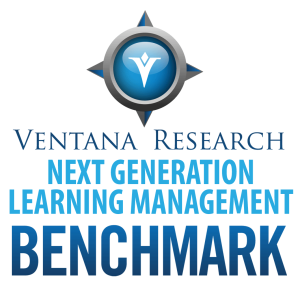As organizations look to improve the competency and 
As organizations look to improve the competency and 
We also analyze performance by four dimensions: People, Process, Information and Technology. In this research, participants perform best in the People (74% at the two highest levels) and Technology (53%) dimensions. Conversely, more than half rank at the two lowest levels for Process (55%) and Information (62%).
Learning management systems have existed in various forms for many years, yet the research finds that a significant number of organizations participating in this research have not adopted this technology. Although nearly two in three (63%) have a training department responsible for learning management, only about half (53%) have a learning management system. Moreover, a formal approach to learning management correlates with size of company: The numbers of those that have a training department rise at each size level, from 25 percent of small organizations to 100 percent of very large ones. There is a corresponding increase in the number that have learning management systems (small 28%, very large 92%). Because larger organizations have more employees, they likely wish to train them uniformly and more often have resources to devote to this function. Most organizations of all sizes said the primary purpose of the learning management system is employee development training (46%) or compliance-related learning (29%). The use of an LMS automate learning processes and be more efficient in their operations.
Also, learning management systems can contribute to the effectiveness of other employee-related systems including human resources management (HRMS) and talent management. Organizations can gain a more complete view of employees, their performance and what they learn by applying their learning management systems to worker activities. The research shows that most have not done such integration, but some have connected learning management to closely related HR business processes like employee development (35%), which the research shows is the primary purpose of their learning management programs for nearly half of organizations. Performance management (33%) and employee onboarding (27%) are the processes to which they have connected learning management next most often.
Integrating the learning management and performance review processes also makes sense in that the benefit of learning management most often cited (by 72%) is to create more effective workers. Three out of four (77%) of those connecting the two processes are satisfied or somewhat satisfied with how they link learning management and performance reviews. Looking ahead, the research finds double-digit percentages of organizations planning to connect learning management with other HR business processes in the next 12 months and similar percentages planning to do so within 24 months.
Effective learning management requires content to educate
Learning management and employee training is a widespread corporate function, and the research finds that 70 percent of organizations have an annual budget for it. In nearly half (47%) of those the budget has increased in the past 12 months; in only 13 percent has it decreased. Thus the opportunity for further investment in learning management exists, as having a budget is the top-ranked consideration (placed first by 15%) for building a business case; among job functions, executives (23%) ranked budget as most important more often than others. Among those ranked first or second in importance, having a budget and ensuring executive sponsorship tied for the top consideration (28% each). These two factors should be considered in tandem.
Organizations building a business case can find key benefits in learning management systems; the most-often found in the
Learning management systems have the potential to transform training organizations by increasing employees’ effectiveness in their jobs and preparing them to act according to their company’s policies and rules. Linking a learning management system to other human capital management processes and tools can bring a tighter connection between people and performance that can result in positive outcomes. Organizations seeking to prepare their workforces better for their roles should examine how the next generation of LMS can help them achieve this goal.